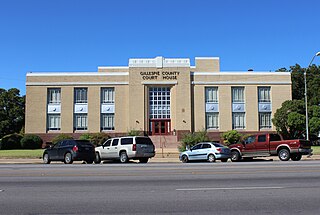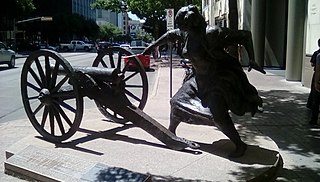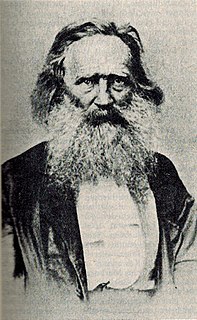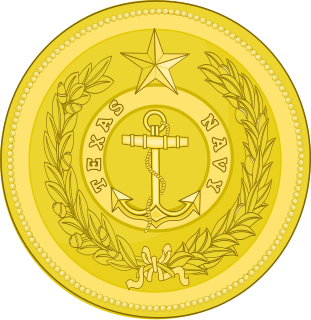Related Research Articles

Llano County is a county located on the Edwards Plateau in the U.S. state of Texas. As of the 2020 census, its population was 21,243. Its county seat is Llano, and the county is named for the Llano River.

Kendall County is a county located on the Edwards Plateau in the U.S. state of Texas. In 2020 census, its population was 44,279. Its county seat is Boerne. The county is named for George Wilkins Kendall, a journalist and Mexican–American War correspondent.

Gillespie County is a county located on the Edwards Plateau in the U.S. state of Texas. As of the 2020 census, its population was 26,725. The county seat is Fredericksburg. It is located in the heart of the rural Texas Hill Country in Central Texas. Gillespie is named for Robert Addison Gillespie, a soldier in the Mexican–American War.

Comal County is a county located on the Edwards Plateau in the U.S. state of Texas. As of the 2020 census, its population was 161,501. Comal County is known for its rich German-Texan and European history. Its county seat is New Braunfels.

New Braunfels is a city in Comal and Guadalupe counties in the U.S. state of Texas known for its German Texan heritage. It is the seat of Comal County. The city covers 44.9 square miles (116 km2) and has a 2019 census-estimated population of 90,209. A suburb just north of San Antonio, and part of the Greater San Antonio metropolitan area, it was the third-fastest-growing city in the United States from 2010-2020.

Đorđe Šagić, also known as George (Jorge) Fisher, was a customs officer and early leader of the Texas Revolution.

The Texas Archive War was an 1842 dispute over an attempted move of the Republic of Texas national archives from Austin to Houston and, more broadly, over President Sam Houston's efforts to make Houston the capital of Texas.

Henri Castro, a Jewish Texan, was one of the most important empresarios of the Republic of Texas.

John O. Meusebach, born Otfried Hans Freiherr von Meusebach, was at first a Prussian bureaucrat, later an American farmer and politician who served in the Texas Senate, District 22.

Ferdinand Jacob Lindheimer was a German Texan botanist who spent his working life on the American frontier. In 1936, Recorded Texas Historic Landmark number 1590 was placed on Lindheimer's grave.

The Texas Navy, officially the Navy of the Republic of Texas, also known as the Second Texas Navy, was the naval warfare branch of the Texas Military Forces during the Republic of Texas. It descended from the Texian Navy, which was established in November 1835 to fight for independence from Centralist Republic of Mexico in the Texas Revolution. The Texas Navy, Texas Army, and Texas Militia were officially established on September 5, 1836 in Article II of the Constitution of the Republic of Texas. The Texas Navy and Texas Army were merged with the United States Armed Forces on February 19, 1846 after the Republic of Texas became the 28th state of the United States.
Henry Francis Fisher was a notable German Texan. Born in Kassel, Hesse in 1805, Fisher left the mainland in late 1833 spending a year each, in London and New York, and two in New Orleans. He crossed over into Texas either in 1837 or early 1838, stopping in Houston, Texas where he served as consul to the Hanseatic League (Bremen) Texas. He became interested in the exploration and colonization of the San Saba, Texas area and in 1839 was acting treasurer of the San Saba Company, which was later reorganized as the San Saba Colonization Company. He was a key part in the Fisher–Miller Land Grant. He spoke German and additionally Spanish and English when Texas came under Mexican and U.S. rules.

German Texan is both a term to describe immigrants who arrived in the Republic of Texas from Germany from the 1830s onward and an ethnic category that includes their descendants in today's state of Texas. The arriving Germans tended to cluster in ethnic enclaves; the majority settled in a broad, fragmented belt across the south-central part of the state, where many became farmers. As of 1990, about three million Texans considered themselves at least part German in ancestry, a subgroup of German Americans.
Castell is a small unincorporated, rural town in Llano County, Texas, United States. It is part of the Texas German belt region, and most residents are still ethnic German-Texan. Its population was 104 at the 2010 census. Located in the heart of the Texas Hill Country, its northern border is formed by the Llano River. It was designated a Recorded Texas Historic Landmark in 1964, marker number 9440.

The Mainzer Adelsverein at Biebrich am Rhein, better known as the Mainzer Adelsverein, organized on April 20, 1842, was a colonial attempt to establish a new German settlement within the borders of Texas.

The Meusebach–Comanche Treaty was a treaty made on May 9,1847 between the private citizens of the Fisher–Miller Land Grant in Texas, who were predominantly German in nationality, and the Penateka Comanche Tribe. The treaty was officially recognized by the United States government. In 1936, a Recorded Texas Historic Landmark, Marker number 991, was placed in San Saba County to commemorate the signing of the treaty.
Jacob Kuechler (1823–1893) was surveyor, conscientious objector during the Civil War, and commissioner of the Texas General Land Office. Kuechler pioneered the science of Dendrochronology to date natural events.

The Fisher–Miller Land Grant was part of an early colonization effort of the Republic of Texas. Its 3,878,000 acres covered 5,000 square miles (13,000 km2) between the Llano River and Colorado River. Originally granted to Henry Francis Fisher and Burchard Miller, the grant was sold to the German colonization company of Adelsverein. Very few colonizations resulted from the land grant, as most settlers preferred Fredericksburg and New Braunfels, which lay outside the land grant boundaries. A granite monument located near Lookout Mountain in Burnet County summarizes the history and importance of the Fisher-Miller Land Grant and was designated as a Recorded Texas Historic Landmark in 1964, Marker number 9438.

The Texas Army, officially the Army of the Republic of Texas, was the land warfare branch of the Texas Military Forces during the Republic of Texas. It descended from the Texian Army, which was established in October 1835 to fight for independence from Centralist Republic of Mexico in the Texas Revolution. The Texas Army was provisionally formed by the Consultation in November 1835, however it did not replace the Texian Army until after the Battle of San Jacinto. The Texas Army, Texas Navy, and Texas Militia were officially established on September 5, 1836, in Article II of the Constitution of the Republic of Texas. The Texas Army and Texas Navy were merged with the United States Armed Forces on February 19, 1846, after the Republic of Texas became the 28th state of America.

The Dallas Equal Suffrage Association (DESA) was an organization formed in Dallas, Texas in 1913 to support the cause of women's suffrage in Texas. DESA was different from many other suffrage organizations in the United States in that it adopted a campaign which matched the social expectations of Dallas at the time. Members of DESA were very aware of the risk of having women's suffrage "dismissed as 'unladylike' and generally disreputable." DESA "took care to project an appropriate public image." Many members used their status as mothers in order to tie together the ideas of motherhood and suffrage in the minds of voters. The second president of DESA, Erwin Armstrong, also affirmed that women were not trying to be unfeminine, stating at an address at a 1914 Suffrage convention that "women are in no way trying to usurp the powers of men, or by any means striving to wrench from man the divine right to rule." The organization also helped smaller, nearby towns to create their own suffrage campaigns. DESA was primarily committed to securing the vote for white women, deliberately ignoring African American women in the process. Their defense of ignoring black voters was justified by having a policy of working towards "only one social reform at a time."
References
- ↑ Tiling, Moritz Philip Georg (2010) [1913]. History of the German element in Texas from 1820-1850, and historical sketches of the German Texas singers' league and Houston Turnverein from 1853-1913. Reprint. Nabu Press. p. 88. ISBN 978-1-176-48313-2.
- ↑ Biesele, Rudolph L. "Fisher-Miller Land Grant". Handbook of Texas Online. Texas State Historical Association. Retrieved 12 February 2011.